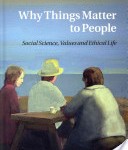A friend passed along this article from the Wall Street Journal, about the shrinking gap between men and women in terms of who reports marital infidelity. It relies on the good old General Social Survey, whose numbers can be compared from year to year for the purpose of assessing trends in Americans’ social behavior. It states:
Among the most reliable studies on this issue is the General Social Survey, sponsored by the National Science Foundation, which has been asking Americans the same questions since 1972. In the 2010 survey, 19% of men said that they had been unfaithful at some point during their marriages, down from 21% in 1991. Women who reported having an affair increased from 11% in 1991 to 14% in 2010.
Since I included a comparable question in the New Family Structures Study, I thought it’d be good to compare the NFSS and see what it says about the gender gap in infidelity. The NFSS surveyed a nationally-representative sample of 18-39-year-olds, albeit a more narrow range of persons than the GSS, which goes up to age 72 (if I recall). And my question is a bit different, in that it includes not only married (or previously-married) couples but currently-cohabiting ones as well. It reads:
Have you ever had a sexual relationship with someone else while you were married (or living with another romantic partner)?
So the NFSS widens the scope of relationships about which respondents will answer, while narrowing the age range, thus limiting the duration of time that people will be reflecting about when they answer. (In other words, a 60-year-old likely typically has more time-opportunity to stray than a 35-year-old). So what does the data say? The same thing as the GSS. The gender gap is indeed narrowing, and in the NFSS it does not appear at all: 19 percent of women report having ever had a sexual relationship with someone else while married or cohabiting, while the same is true of 18 percent of men. The difference is not statistically significant.
As the WSJ article goes on to detail, it’s not about declining support for fidelity. Although the NFSS can’t measure decline in support for fidelity over time–as the GSS can–such support indeed is strong among both men and women in the NFSS: only 3 percent of women and 6 percent of men agreed (or strongly agreed) that “it is OK for a married person to have sexual relations with someone other than his/her spouse.”
So why the likely uptick in cheating but stability in valuing monogamy? That’s a much deeper well to excavate, and I’m out of time today to discuss it at length, but in a nutshell, it likely has to do with expanded female opportunity and economic power, stability in what people wish for in a relationship, shifts in the mating market, online exposure to emotional relationship opportunities, etc. More on that some other day.












